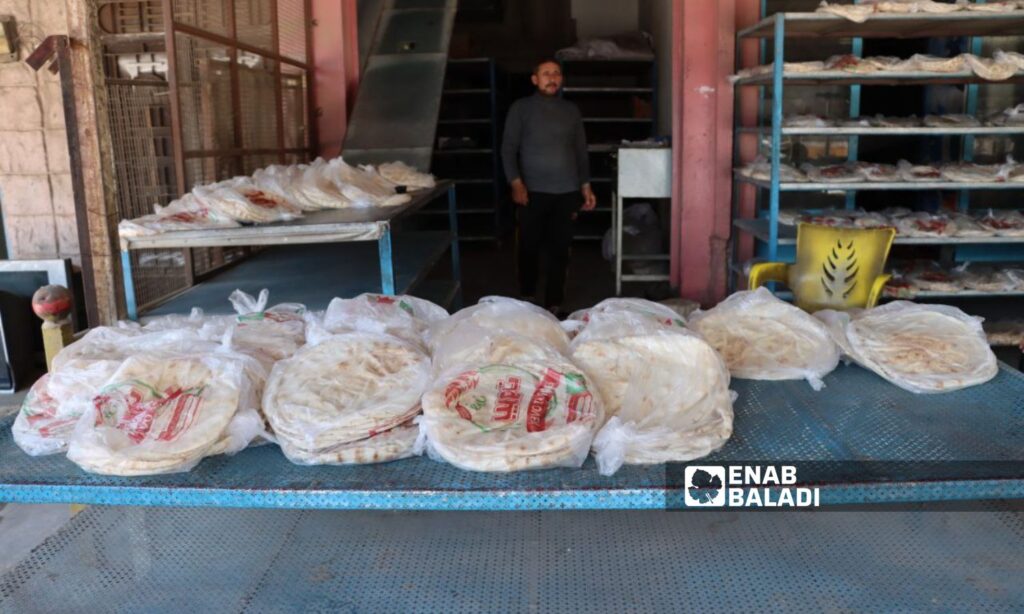The Autonomous Administration of North and East Syria (AANES) has raised the price of subsidized bread in areas under its control from 1,500 to 2,000 Syrian pounds.
The decision, which was circulated four days ago to bakeries and related institutions in the region, is set to take effect starting this Saturday, November 23.
AANES stated in its decision that from this date onward, public and private bakeries producing subsidized bread will be supplied with basic materials based on the new quantities and prices.
Enab Baladi verified the validity of the decision that was circulated by local news pages through three sources working in the Economic Board affiliated with the Autonomous Administration in both Deir Ezzor and al-Hasakah.
Enab Baladi’s correspondents in al-Hasakah and Deir Ezzor reported that bakeries began selling bread at the price of 2,000 Syrian pounds last week.
The exchange rate of the US dollar against the Syrian pound is 14,750 pounds, according to the S-P Today website, which specializes in tracking currency movement.
A responsible source in the Middle Sector Economy Office in Deir Ezzor stated that the policy of raising or lowering prices is issued by the Agriculture and Economy Board in the north (al-Hasakah), indicating that the southern regions are only concerned with application (Deir Ezzor and Raqqa).
This step marks the third of its kind this year, as AANES had previously announced in March to raise bread prices.
At that time, it issued a circular that doubled the price to reach 1,000 Syrian pounds.
The circular specified the weight of the bread bundle at 1,100 grams, consisting of nine loaves, priced at 900 pounds, with a profit margin for the distributor of 100 pounds.
In May, the price of the bread bundle had reached the approved price of 1,400 Syrian pounds, while the consumer price was 1,500 pounds, according to what was published by the local North Press Agency.
At that time, the Agriculture Economy Board pointed out that it had instructed social development companies, mills, and bakeries to adopt the new pricing for flour and bread.
The residents of the region are experiencing poor living conditions similar to various areas of influence on the Syrian geography.
The areas controlled by the Autonomous Administration are considered the richest in Syria, as they contain most of the oil wells and are described as “the grain reservoir of Syria,” due to their agricultural activity.











